Livingston was designated a ‘New Town’ in 1962. Nearly 1,000 years earlier, the kings of Scotland chose this sheltered valley as the site for a royal hunting lodge, with game ranging from large red deer to wild boar and hare, hunted by kings and noblemen, with hawk and hound. The royal hunting lodge is recalled by the name ‘Newyearfield’, where it once stood. This unusual place name is a reminder that Scotland’s early medieval monarchs chose to enjoy the first hunt of the year in Livingston. In those far off days, the Scottish new year was celebrated on 1 April.
Illustrations, a print and text about The NewYearField.
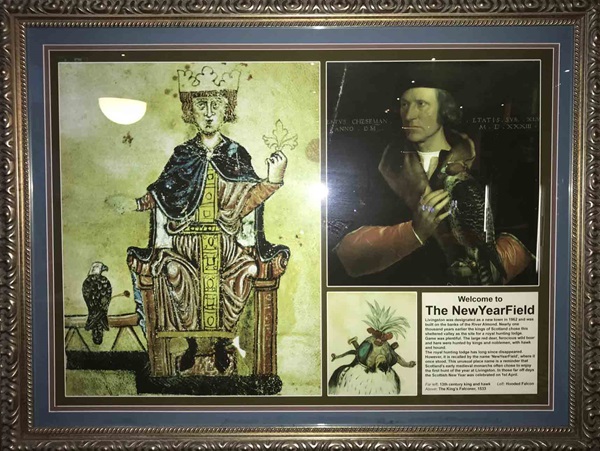
The text reads: Livingston was designated a ‘New Town’ in 1962 and was built on the banks of the River Almond. Nearly one thousand years earlier the kings of Scotland chose this sheltered valley as the site for a royal hunting lodge. Game was plentiful. The large red deer, ferocious wild boar and hare were hunted by kings and noblemen, with hawk and hound.
The royal hunting lodge has since disappeared. However it is recalled by the place name ‘NewYearField’, where it once stood. This unusual place name is a reminder that Scotland’s early medieval monarchs often chose to enjoy the first hunt of the year at Livingston. In those far off days the Scottish New Year was celebrated on 1 April.
Far left: 13th century king and hawk
Left: Hooded falcon Above: The King’s Falconer, 1533.
Photographs and text about the history of Livingston.
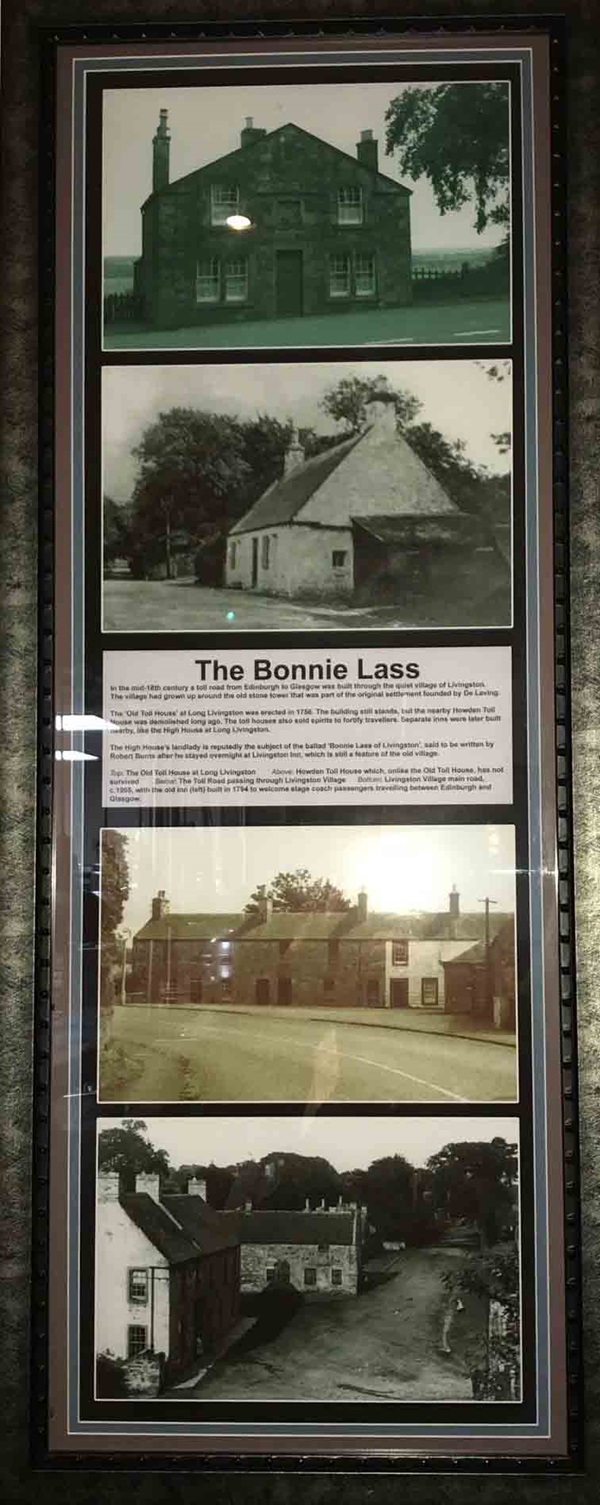
The text reads: In the mid 18th century a toll road from Edinburgh to Glasgow was built through the quiet village of Livingston. The village had grown up around the old stone tower that was part of the original settlement founded by De Leving.
The ‘Old Toll House’ at Long Livingston was erected in 1756. The building still stands, but the nearby Howden Toll was demolished long ago. The toll houses also sold spirits to fortify travellers. Separate inns were later built nearby, like the High House at Long Livingston.
The High House’s landlady is reputedly the subject of the ballad ‘Bonnie Lass of Livingston’, said to be written by Robert Burns after he stayed overnight at Livingston Inn, which is still a feature of the old village.
Top: The Old Toll House at Long Livingston
Above: Howden Toll House which, unlike the Old Toll House, has not survived Below: The Toll Road passing through Livingston Village
Bottom: Livingston Village main road, c1905, with the old inn (left) built in 1974 to welcome stage coach passengers travelling between Edinburgh and Glasgow.
A photograph and text about Livingston Designer Outlet.
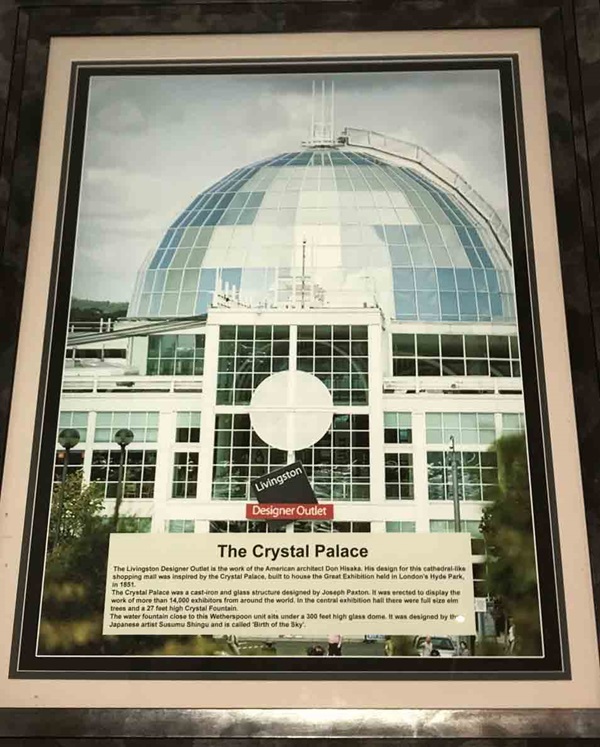
The text reads: The Livingston Designer Outlet is the work of the American architect Don Hisaka. His design for this cathedral-like shopping mall was inspired by the Crystal Palace, built to house the Great Exhibition held in London’s Hyde Park in 1851.
The Crystal Palace was a cast-iron and glass structure designed by Joseph Paxton. It was erected to display the work of more than 14,000 exhibitors from around the world. In the central exhibition hall there were full size elm trees and a 27 feet high crystal fountain.
The water fountain close to this Wetherspoon unit sits under a 300 feet high glass dome. It was designed by Japanese artist Susumu Shingu and is called Birth of the Sky.
Illustrations and text about the history of the area.
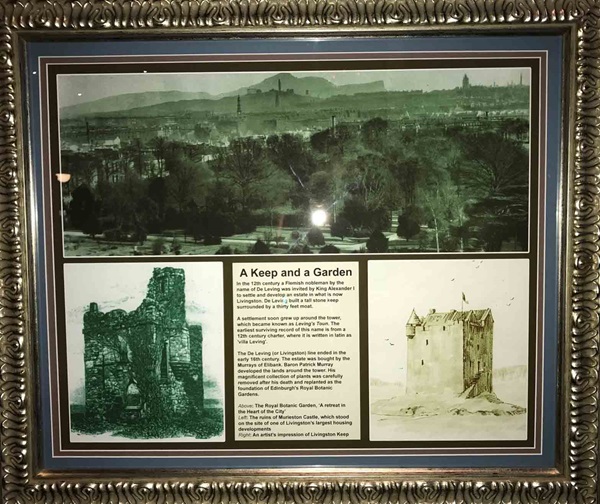
The text reads: In the 12th century a Flemish nobleman by the name of De Leving was invited by King Alexander I to settle and develop an estate in what is now Livingston. De Leving built a tall stone keep surrounded by a thirty feet moat.
A settlement soon grew up around the tower, which became known as Leving’s Toun. The earliest surviving record of this name is from a 12th century charter, where it is written in Latin as ‘villa Leving’
The De Leving (or Livingston) line ended in the early 16th century. The estate was bought by the Murrays of Elibank. Baron Patrick Murray developed the lands around the tower. His magnificent collection of plants was carefully removed after his death and replanted as the foundation of Edinburgh’s Royal Botanic Gardens.
Above: The Royal Botanic Garden, ‘A retreat in the Heart of the City’
Left: The ruins of Murieston Castle, which stood on the site of one of Livingston’s largest housing developments
Right: An artist’s impression of Livingston Keep.
Illustrations depicting different stages of hunting.
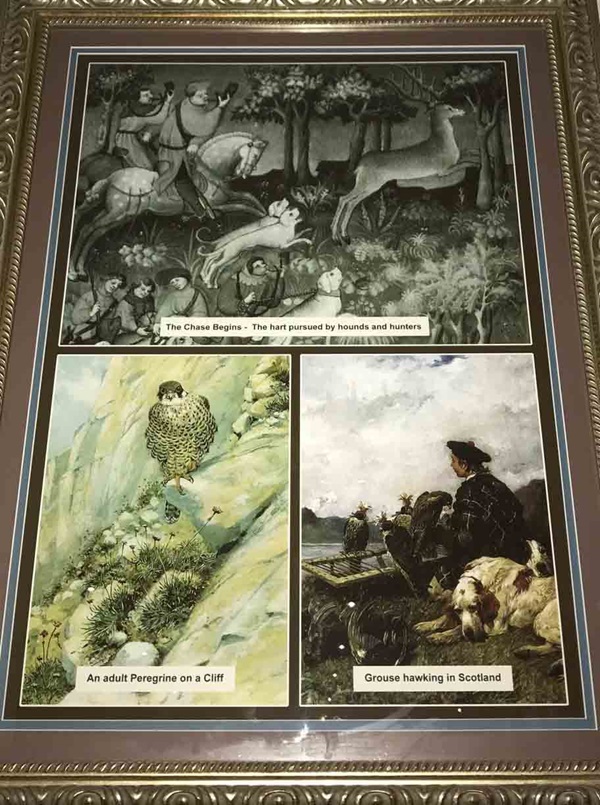
Top: The chase begins – the hart pursued by hound and hunters
Bottom left: An adult peregrine on a cliff
Bottom right: Grouse hawking in Scotland.
Illustrations of Sir Patrick Murray and Edinburgh’s Royal Botanic Gardens.
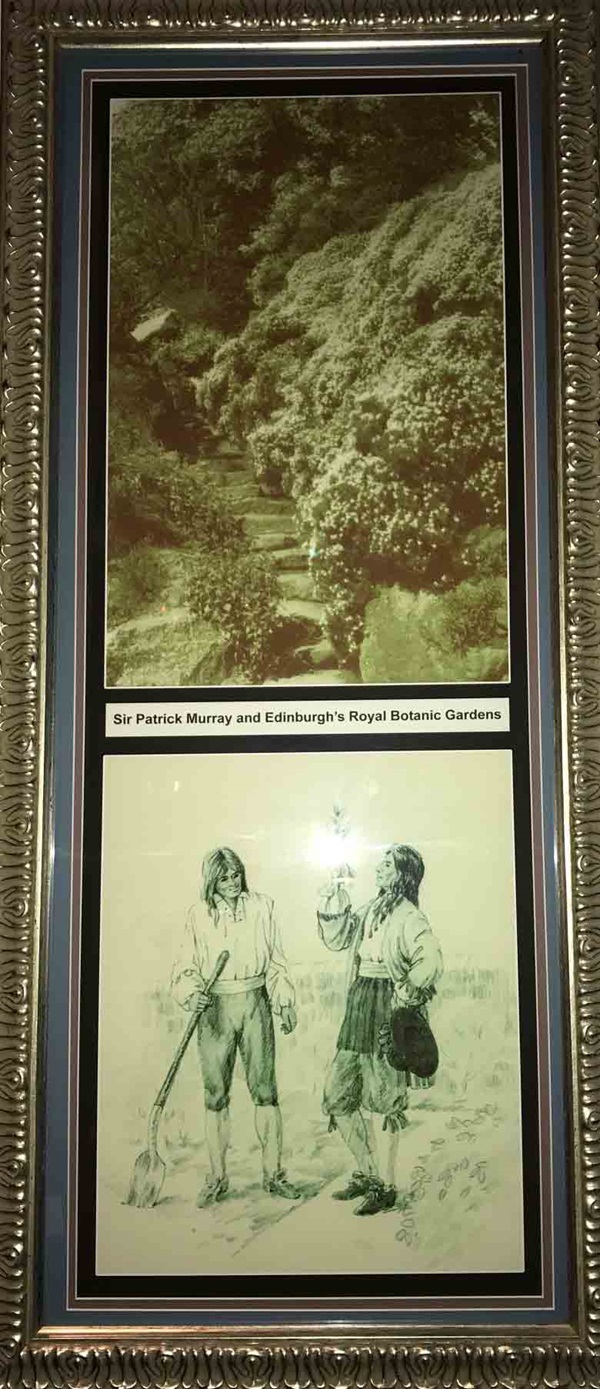
Illustrations of boar hunting on foot and The main varieties of dog used in medieval hunting.
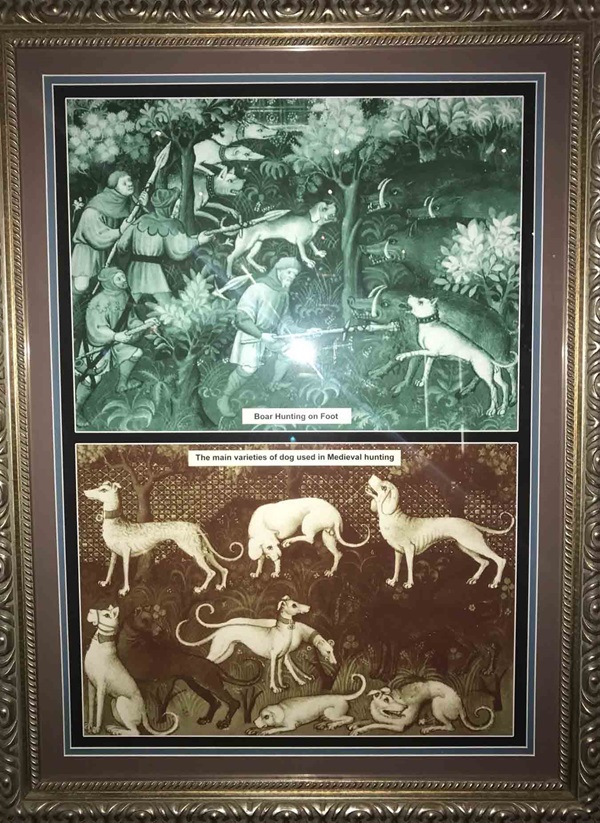
A sculpture entitled Wild Boar, by Simon Griffiths.
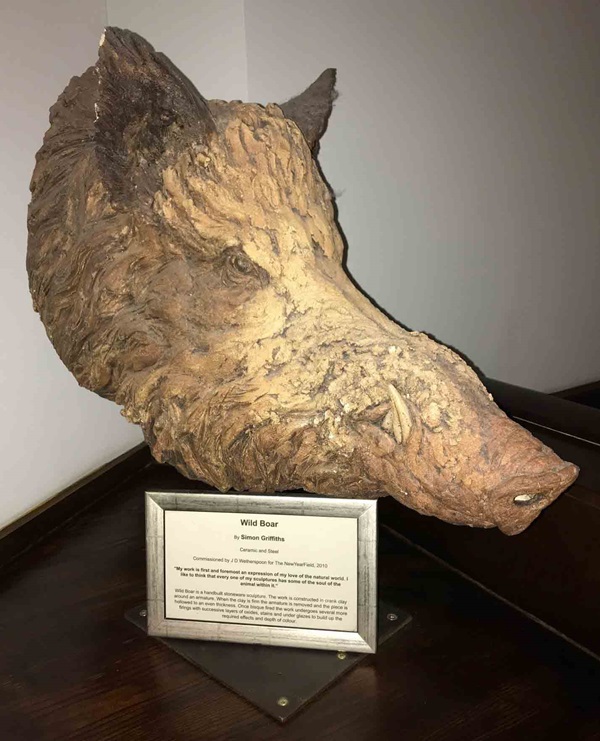
“My work is first and foremost an expression of my love of the natural world. I like to think that every one of my sculptures has some of the soul of the animal within it”.
Wild Boar is a hand built stoneware sculpture. The work is constructed in crank clay around an armature. When the clay is firm the armature is removed and the piece is hollowed to an even thickness. Once bisque fired, the work undergoes several more firings with successive layers of oxides, stains and under glazes to build up the required effects and depth of colour.
External photograph of the building – main entrance.
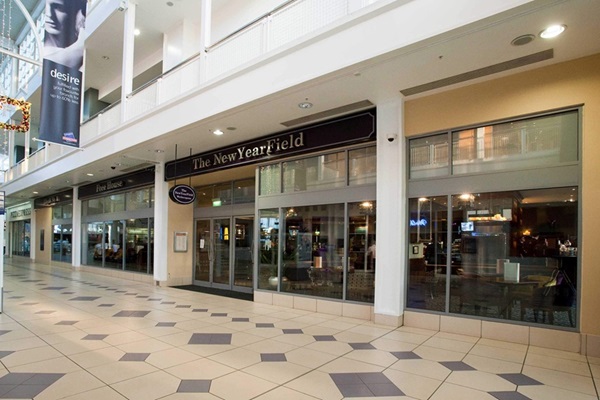
If you have information on the history of this pub, then we’d like you to share it with us. Please e-mail all information to: pubhistories@jdwetherspoon.co.uk